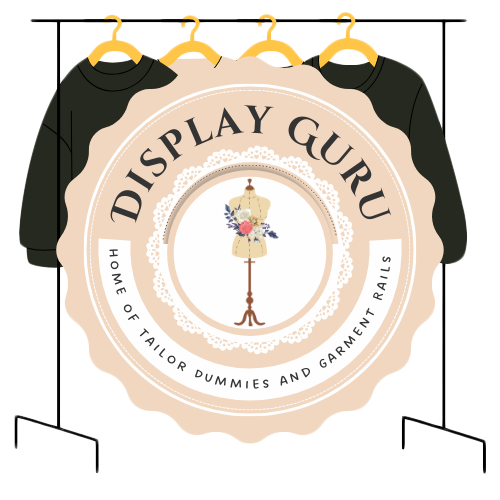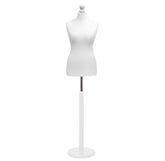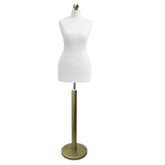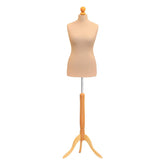Choosing Your Perfect Head Mannequin Stand
A head mannequin stand is the unsung hero for anyone styling, creating, or displaying wigs and headwear. It's so much more than a simple holder; it's the stable, adjustable foundation you need to produce professional, high-quality work. Think of it as a reliable third hand for stylists, shop owners, and creators.
Why the Right Stand Is Your Most Important Tool
Ever tried painting a masterpiece on a wobbly easel? The thought alone is frustrating. Every brushstroke would be compromised. The same logic applies directly to your work with headwear. A precise haircut, detailed wig ventilation, or an elegant retail display all depend entirely on the stability of the stand holding the mannequin head.
A cheap or poorly suited stand doesn't just sit there; it actively works against you. It might wobble as you're trying to get a perfectly even line, or worse, tip over and ruin hours of work on an expensive wig. For a retailer, a flimsy stand can make a premium hat look cheap and unappealing. It's a recipe for frustration and inefficiency.
The Foundation for a Professional Finish
Choosing the right stand is a direct investment in the quality of your work. It's what allows you to work with precision, safety, and comfort, turning an amateur setup into an expert one.
A good head mannequin stand brings several game-changing advantages to the table:
- Ergonomic Comfort: With adjustable height and angles, you can say goodbye to neck and back strain. This lets you focus on your craft comfortably for much longer.
- Unwavering Stability: A solid base, whether it's a tripod or a C-clamp, keeps the head perfectly still. This gives you absolute control over every detail.
- Enhanced Precision: When the base is secure, you can tackle delicate tasks like colouring, cutting, and ventilating with far greater accuracy.
In the end, the stand isn't just an accessory. It’s a non-negotiable tool that unlocks your creativity and guarantees a professional result. Grasping the crucial role of a quality mannequin on stand is the first step toward making a purchase you'll be happy with for years to come.
Comparing Different Types of Mannequin Stands
Choosing the right head mannequin stand isn't about finding a single "best" option. It's about matching the tool to the job. Think of it like a chef's knife collection – you wouldn't use a cleaver for delicate paring. In the same way, a stylist, a shop owner, or a wig maker each needs a stand built for their specific craft.
The Right Stand for the Job
If you're in the world of cosmetology, whether as a student or a seasoned pro, a clamp stand (often called a C-clamp stand) is probably your best friend. These attach firmly to a table edge or counter, giving you rock-solid stability. When you're cutting, colouring, or doing intricate styling, you need the head to stay put, and a clamp stand delivers that control.
But what if you're a boutique owner displaying the latest collection of hats or showcasing premium headphones? A clamp isn't practical or elegant. Here, a countertop or desktop stand is the clear winner. These are designed with aesthetics in mind, using a weighted base for stability. They're easy to move and perfect for creating an attractive display that draws the customer's eye.
This infographic breaks down which stand is best suited for your main purpose.
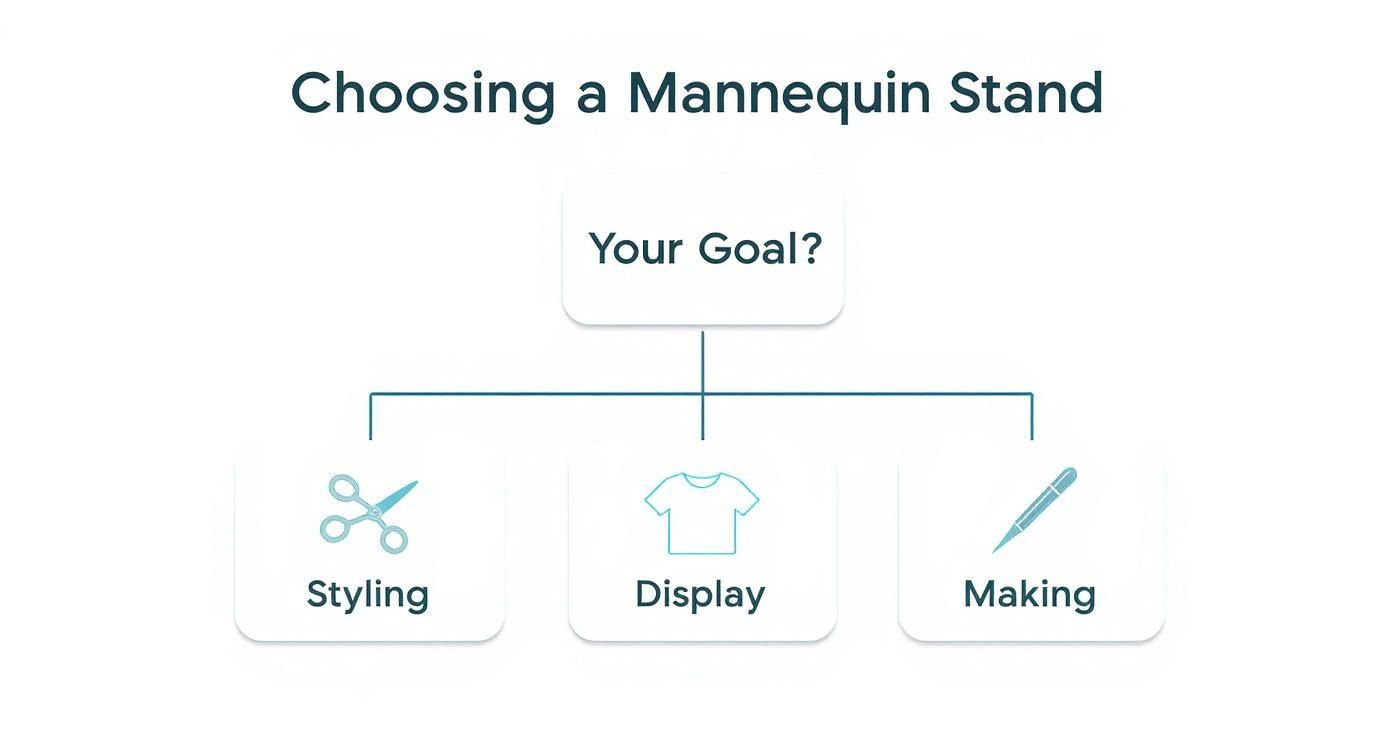
As you can see, what you plan to do with the mannequin head—be it styling, displaying, or creating—is the most critical factor in your decision.
Don't Forget About Materials and Durability
The material of the head itself is just as important as the stand it sits on. A simple styrofoam head is a budget-friendly choice for basic storage or a very light-duty display. However, it simply won't hold up to the demands of professional wig making, where T-pins are pushed in and pulled out constantly.
For that kind of heavy-duty work, the industry standard is the canvas block head. Its tough canvas skin covers a cork or polyurethane core, a combination designed to grip pins securely, time and time again, without falling apart.
In a busy retail environment, fibreglass or plastic mannequin heads offer a polished, hard-wearing finish that’s perfect for showing off high-end accessories. The market for these tools is surprisingly large; in 2023, the global mannequin head market was valued at a staggering USD 1,095.3 million, with the UK playing a key role.
The right material can make all the difference. To help you weigh your options, this table breaks down the most common choices.
Head Mannequin Stand Materials at a Glance
| Material | Key Features | Best For | Price Range |
|---|---|---|---|
| Styrofoam | Very lightweight, inexpensive, easily pierced. | Light display, wig storage, hobbyist use. | £ |
| Canvas Block | Durable, holds T-pins securely, professional grade. | Wig making, styling, cosmetology training. | ££ |
| Fibreglass | Hard, smooth finish, realistic features, durable. | High-end retail displays, photography. | £££ |
| Plastic | Lightweight yet durable, easy to clean, often abstract. | General retail, displaying hats, headphones. | £-££ |
Ultimately, choosing the right material comes down to balancing your budget with the demands of your work.
The bottom line is that your stand and head need to work together as a cohesive unit. A professional-grade canvas head needs an equally sturdy stand to support it. Our guide on choosing a mannequin with a stand offers more detailed advice on making the perfect match, ensuring your setup is a stable and reliable foundation for any project.
Essential Features That Make a Difference
Once you’ve decided on the type of stand you need, it's the little details that truly separate a good stand from a great one. Think of it this way: you’re choosing a tool that should feel like an extension of your own hands, not something you’re constantly fighting with. The right features will make your work smoother, faster, and far more enjoyable.

The absolute number one feature to look for is stability. It doesn't matter how many other bells and whistles a stand has; if it wobbles, it’s practically useless. This stability all comes down to the design of the base, and you’ll generally find three main options.
- Tripod Base: This is the versatile workhorse. A tripod gives you brilliant stability and is easy to pack up and move around. Its adjustable legs are also a lifesaver if you're working on slightly uneven floors.
- C-Clamp Base: For rock-solid security, nothing beats a C-clamp. It fixes directly onto a desk or workbench, making it the go-to choice for intensive work like wig ventilating where even the slightest movement is a problem.
- Weighted Desktop Base: These are neat and compact, making them great for shop displays or very light styling work. Just be aware they don't offer the same level of security for more hands-on jobs.
Adjustability and Material Durability
After stability, your next priority should be adjustability. A stand stuck at the wrong height or angle will have you hunched over in uncomfortable positions, leading to a sore back and neck. Always look for a stand with a 360-degree rotating top and a height adjustment system that is both smooth to operate and locks securely in place. For anyone spending hours on a project, this kind of ergonomic design is essential.
The ability to easily tilt and turn the head is what allows for true precision. It means you can work comfortably from any angle without physically repositioning yourself or the entire stand, saving both time and energy.
Finally, let's talk about the material. This is what determines how long your stand is going to last. For professional, heavy-duty use, you really can't go wrong with metal—specifically stainless steel or aluminium. They’re built to last, resist rust, and won't buckle under the weight of a heavier mannequin head. Plastic stands are certainly lighter and often cheaper, but they're far more likely to crack over time and just don't offer the same long-term reliability.
Just as a sturdy dress form stand is non-negotiable for dressmaking, a robust stand is the foundation for any serious headwear or wig work.
Real-World Uses in Creative and Retail Fields
Far from being confined to a training salon or workshop, the head mannequin stand is a surprisingly versatile tool found across many professional fields. Think of it as a silent partner, one that helps bring creative visions to life and can even drive sales. Its uses are as varied as the industries that have come to rely on it.
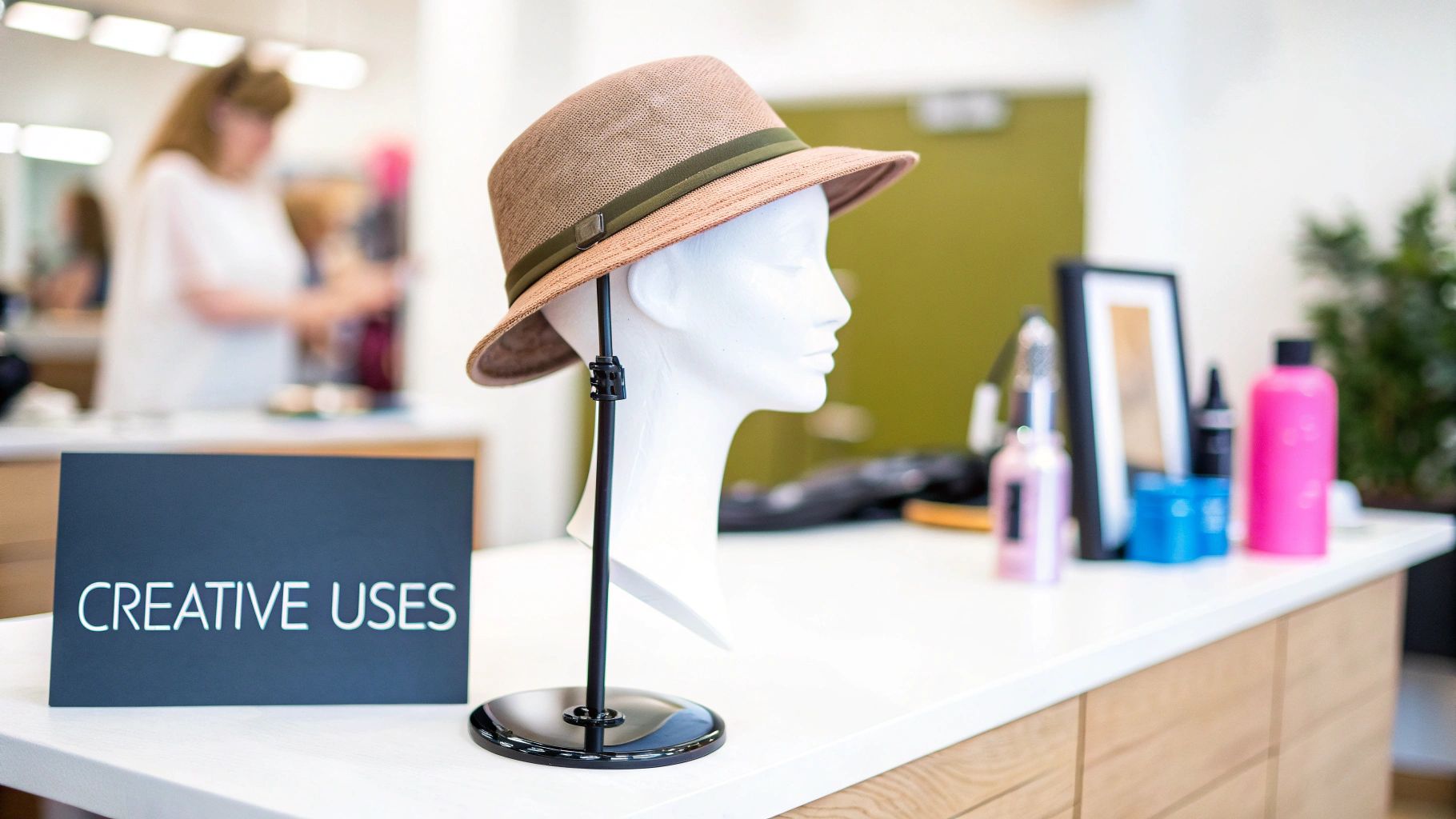
For hairstylists and cosmetology students, the stand is an invaluable training aid. It offers the freedom to practise complex updos, colouring techniques, and precision cuts over and over again without needing a live model. This constant, hands-on repetition is what builds muscle memory and confidence, leading to impeccable results with real clients.
Wig makers also depend on a solid stand to anchor their intricate work. The delicate process of ventilating—where individual hair strands are hand-tied to a wig cap—requires total stability. A quality stand keeps the foundation perfectly still for hours of detailed craftsmanship, which is essential for creating a natural, long-lasting custom piece.
From Workshop to Shop Window
In the world of retail, the head mannequin stand serves an entirely different, but equally important, purpose. It becomes a key player in visual merchandising. A hat, a stylish pair of headphones, or a delicate necklace can seem a bit lifeless sitting on a flat shelf. But place it on a mannequin head, and suddenly the product has context and personality.
A well-staged display can genuinely sway a customer's decision to buy. The mannequin stand helps people see exactly how an item would look on them, turning a simple accessory into a must-have part of an outfit.
This is particularly relevant in the UK’s booming beauty industry. The country's hair wigs and extensions sector was valued at around USD 342.3 million back in 2021, a figure that highlights the constant need for stands in styling, product photography, and shop displays.
For smaller businesses, these professional displays are some of the most essential marketing materials for building an inviting and attractive shop front. Our full guide on display stands for retail offers more ideas on how to make them work for you. In the end, whether it’s for creation or commerce, the humble stand is all about elevating the final product.
How to Use and Care for Your Mannequin Stand
Getting the most out of your head mannequin stand really comes down to proper use and a little bit of maintenance. If you treat it well, it’ll be a reliable part of your toolkit for years. A solid, wobble-free setup is the first and most important step.
If you have a tripod stand, make sure the legs are spread as wide as they can go and securely locked. Always place it on a flat, even floor. For C-clamp stands, find a sturdy desk or workbench and tighten the clamp until it’s completely unmovable. You don't want any shifting or sliding once you start working.
Best Practices for Mounting and Maintenance
With your base firmly in place, you can now mount the mannequin head. It should slide onto the mount with a snug fit. Be careful not to force it, as you could crack the mounting hole on the head itself. When making wigs, always push T-pins into a canvas block head at a slight angle—this holds the lace securely without risking tears.
Looking after your stand is straightforward, but it makes a huge difference to its lifespan. Here are a few simple tips:
- Routine Cleaning: Give the stand a quick wipe with a damp cloth every now and then to get rid of dust or styling product residue.
- Head Care: For canvas heads, a gentle fabric cleaner can lift stains. If your head is plastic or fibreglass, a simple wipe-down is all it needs.
- Prevent Rust: After cleaning, always make sure the metal parts of your head mannequin stand are thoroughly dry. This simple step is the best way to stop rust from developing.
A wobbly head is a common frustration, but it's usually an easy fix. Check that the locking mechanism is fully tightened. If it still moves, try wrapping a small piece of cloth around the mount for a tighter grip.
Think of it this way: just as a dressmaker learns every dial and setting on their adjustable sewing mannequin, getting to know your stand’s setup and care needs will turn it into an indispensable professional tool.
Frequently Asked Questions
Even with all the details, you might still have a few questions rattling around. Let's tackle some of the most common ones to make sure you find the perfect stand for your needs.
What Is the Best Stand for Heavy Wigs?
When you're working with heavy or extra-long wigs, stability is everything. Your best bet is a heavy-duty metal tripod stand. Look for one with wide-set legs and non-slip feet; this design spreads the weight out and keeps it firmly planted, even when you're detangling or heat styling with gusto.
Another fantastic option is a sturdy C-clamp stand. This type bolts directly onto a solid table or workbench, giving you rock-solid stability. It's not going anywhere, which makes it perfect for precise, detailed work like wig making. I'd steer clear of the lighter desktop models for heavy jobs, as they just don't have the necessary balance.
Will Any Mannequin Head Fit Any Stand?
For the most part, yes. The industry has a pretty standard design for the mounting hole on the base of most mannequin heads. This means you can usually mix and match heads and stands without any trouble.
That said, it never hurts to double-check the product details before you buy, especially if you're looking at a vintage or highly specialised model. If you're using a canvas block head, just make sure the stand's mount is smooth to prevent it from snagging and damaging the fabric over time.
A secure fit isn't just about convenience; it's about safety and precision. The last thing you want is a wobbly head when you've got sharp scissors or a hot curling iron in your hand. A snug connection means you're in complete control.
How Do I Choose the Correct Head Size?
Mannequin heads are measured by their circumference, just like a real head. They typically come in sizes ranging from 21 to 24 inches, which covers the spectrum of average adult head measurements.
If you're making or styling a wig for a specific person, you'll want to choose a head size that matches their measurements as closely as possible. This is the secret to a perfect fit. For general display in a shop, a standard 22-inch head is a versatile choice that works for most situations.
Ready to find the perfect foundation for your craft? Explore our professional-grade mannequin stands at Display Guru and elevate your work with the stability and quality you deserve. Discover your ideal stand at https://www.displayguru.co.uk.
